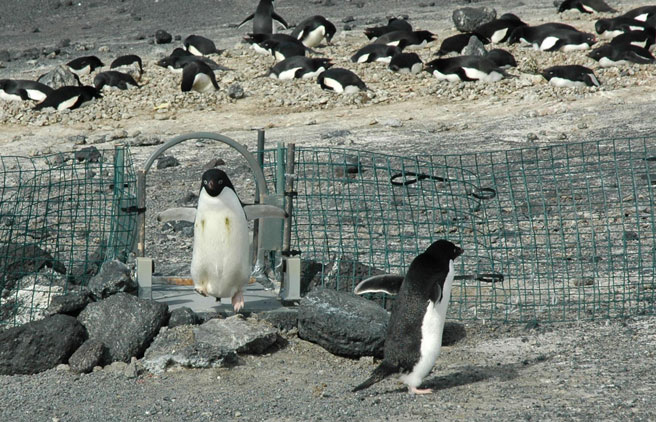How Do We Study the Penguins?
This is a device which identifies and weighs the parents as
they move from the nest to the ocean to feed, and back. An electronic
identification tag (like the ones in pets and race horses) has been
inserted under their skin. When they go through the gate, the sensors
read the tag and identifies the bird. With two sensors we can tell if
the bird came in or went out. There is also a step bridge which records
the weight of the bird. This is how we know how many days the birds are
on the nest or out feeding, and how much they bring in to feed their
chicks. The parents change places on the nest every one to three days.
The chicks will grow from less than 100 grams at birth to over 3000
grams(30 times their birth weight) in about 43 days. In addition to
their own food demands, parents must bring back enough food for their
chicks to sustain the growth rate.
Penguin Science
Go to the Next Postcard
Postcards from the Field: Antarctica
| 




